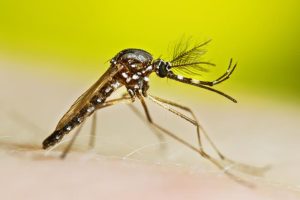NewsDesk @bactiman63
Chikungunya is relatively rare in Senegal.
The World Health Organization (WHO) reported two confirmed cases of the mosquito-borne illness through August 1 in Sokone and Pikine districts; however, since then the total cases have risen to 112 in three departments in the Kedougou region, in the south of the country–Kedougou, Salemata, and Saraya departments.

Fortunately, health officials report no serious cases to date.
The regional director of health, Dr Ababacar Mbaye said, “There are cases of chikungunya even in Dakar, maybe the magnitude is not serious. There are some in Sokone (Fatick), in Pikine. But it is in Kédougou that there is this resurgence of chikungunya cases.”
Dr Mbaye also assures that measures are being taken to curb the epidemic. “There is even a laboratory from the Institut Pasteur which has now moved to Kédougou to facilitate the detection of cases with fairly rapid diagnoses, reports the doctor. There are also teams of anthropologists who communicate with the population so as not to scare. There is nothing to be afraid of. We must take measures because the disease is not too deadly,” he said.
Diphtheria in Africa: Outbreak in Guinea
Chikungunya is transmitted through the bite of an infected mosquito. Symptoms of chikungunya include fever, joint pain, muscle pain, headache, and rash. Symptoms typically appear 3-7 days after being bitten, but can develop up to 12 days after exposure. Most people recover within a week; however, joint pain can sometimes persist for months.
Subscribe to Outbreak News TV on YouTube
- Texas reports 2nd confirmed measles case
- Poland Legionnaires’ disease update
- Texas: Naegleria fowleri death reported in Travis County resident
- South Africa human rabies cases rise to 8
- Bangladesh dengue outbreak update: Cases top 120,000, More cases in August than all of 2022
- Hantavirus case reported in King County teen
- Maryland local malaria case identified as Plasmodium falciparum
- Saudi Arabia reports 3 confirmed MERS cases in past year


One thought on “Chikungunya in Senegal: Cases rise sharply in Kedougou region in August”